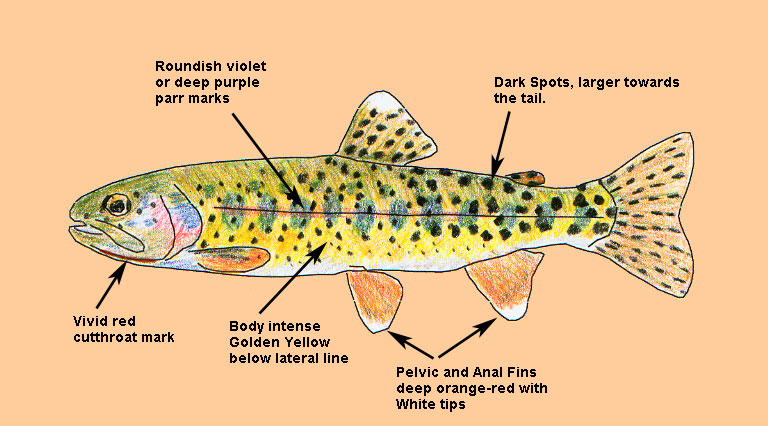

 |
|
The Coastal Cutthroat (Oncorhynchus clarkii clarkii), is the smallest of the three
varieties of sea-trout. The average Coastal cutthroat generally is about 1 lb. with 3 lbs. or more being
quite scarce. Interestingly, this is about the same size as most river-run cutthroats and much smaller
than cutthroats found in lakes. Cutthroat trout do not move far from their natal river estuary, preferring
to stay close to the shoreline in less than 10 feet of water. They return to the freshwater in late summer
and fall. They will feed in the river until they reach their spawing grounds. The cutts will remain within
the River system for 4-5 months and return to the sea in April or May. They can spawn Coastal Cutthroats resemble freshwater rainbows while in the sea. On returning to the river, the flanks turn to yellow-brown and the pale blue-green back turns a darker olive green. Spotting becomes more conspicuous and a faint orange on the throat becomes vivid rich orange-red. |